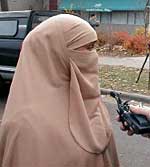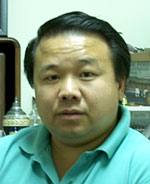By Brandt Williams
Minnesota Public Radio
June 4, 2002
Census 2000 data shows Minnesota is becoming more diverse, due largely to immigrants from other countries. In the 1990s, the state's foreign-born population increased by 130 percent. Most of the state's foreign-born residents live in the two most populous counties - Hennepin and Ramsey. But the largest increases in foreign-born populations occurred in smaller suburban and rural counties.
| |
|
|
|
||
Officials in Scott County say the same factors that attract other Minnesotans to the state's fastest-growing county also draw international immigrants. Located just across the Minnesota River from Bloomington, Scott County residents enjoy easy access from the Twin Cities via Highway 169.
Median incomes are high, and the county is home to several large employers that provide service jobs. The foreign-born population in Scott County has increased nearly 600 percent since 1990, and the number of immigrants from Latin American countries has increased nearly 3,000 percent.
Jorge Marin was born in Mexico and moved to Shakopee in 1991. He says the job opportunities attract many Latinos to Scott County.
"There was a big need for a workforce, and there were jobs for very little requirement for being employed," he says.
Marin says when he first came to Shakopee he worked at Mystic Lake Casino, where a lot of Latinos still work. Canterbury Park and Valley Fair also provide jobs. And a boom in new housing has led to an increase in construction jobs. The Latin-American immigrant population is second only to the number of Asian immigrants in Scott County.
Census figures also show a large increase in the number of sub-Saharan African immigrants to Minnesota. The sub-Saharan African population, which includes Somalis, has increased by more than 600 percent. Most of them have settled in the metro area, too.
| |
|
|
|
||
There is also a new wave of European immigrants becoming more visible in the metro.
"There are three major pockets of the Russian-speaking population in the Twin Cities area," says Oleg Voskresensky, an employment counselor for World Relief, an evangelical Christian organization which helps refugees resettle in the United States.
While the census doesn't report all immigrants' home countries, Voskresensky says Russians are a big part of the group of newcomers arriving in the Twin Cities.
"The newest and the fastest-growing is Shakopee, Savage, Burnsville, Eagan - what we call the Russian belt," he says.
Voskresensky says most of the Russians are refugees who fled religious persecution in Russia. He says even after the fall of communism, some Russians faced opposition to their religious beliefs.
The foreign-born census category includes people who have become naturalized citizens, and those who are not citizens. A person can be born in another country and still be a citizen, as long as one of their parents is a citizen.
In some counties, the foreign-born population includes immigrants who've been in the U.S. for decades, like Ruby Von Ruden.
"My dad came in 1909, my mother in 1912, and that was at the time when there was a great influx of people from Europe," she says.
| |
|
|
|
||
Von Ruden works with the Pine County Committee on Aging. She says her parents came to Minnesota from Sweden. Unlike most Minnesota counties, Pine County saw a large decrease in its foreign-born population. Pine County officials say that's because European immigrants who moved there in the early 20th century are dying, and the county hasn't seen a sizable migration of new foreign-born residents.
Von Ruden says the immigrants of her parents' generation came to Minnesota seeking the same things as 21st century immigrants.
"My dad - he came to Minneapolis to work on the railroad, but he wanted a more independent life so he went to farming. He found a farm and settled there. I think you could say that about a lot of them. They were looking for the independence," says Von Ruden.
State demographer Tom Gillaspy says despite the increases in immigration, Minnesota's diversity lags behind the rest of the nation.
"Minnesota is not a particularly diverse state by national standards, nor do we have a particularly large foreign-born population by national standards. But that population is changing," Gillaspy says.
Minnesota's foreign-born population ranks 21st among U.S. states. California has the largest foreign-born population in the U.S.
More from MPR


